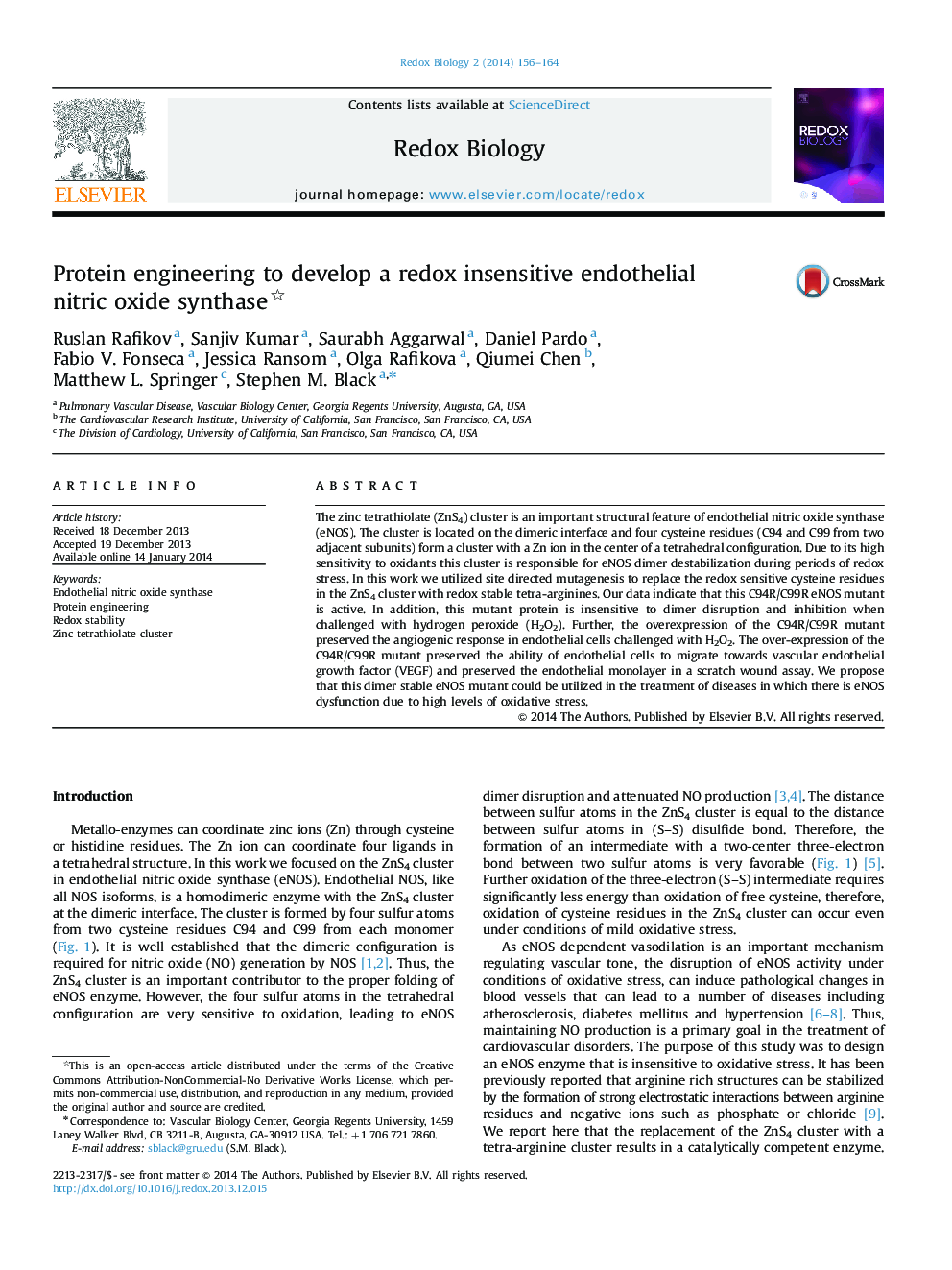| Article ID | Journal | Published Year | Pages | File Type |
|---|---|---|---|---|
| 1923013 | Redox Biology | 2014 | 9 Pages |
•The ZnS4 cluster is an important structural feature of eNOS.•This cluster is responsible for eNOS dimer destabilization during redox stress.•Site directed mutagenesis replaced ZnS4 clusters with redox stable tetra-arginines.•This eNOS mutant is insensitive to dimer disruption during redox stress.•This eNOS mutant continues to produce NO during redox stress.
The zinc tetrathiolate (ZnS4) cluster is an important structural feature of endothelial nitric oxide synthase (eNOS). The cluster is located on the dimeric interface and four cysteine residues (C94 and C99 from two adjacent subunits) form a cluster with a Zn ion in the center of a tetrahedral configuration. Due to its high sensitivity to oxidants this cluster is responsible for eNOS dimer destabilization during periods of redox stress. In this work we utilized site directed mutagenesis to replace the redox sensitive cysteine residues in the ZnS4 cluster with redox stable tetra-arginines. Our data indicate that this C94R/C99R eNOS mutant is active. In addition, this mutant protein is insensitive to dimer disruption and inhibition when challenged with hydrogen peroxide (H2O2). Further, the overexpression of the C94R/C99R mutant preserved the angiogenic response in endothelial cells challenged with H2O2. The over-expression of the C94R/C99R mutant preserved the ability of endothelial cells to migrate towards vascular endothelial growth factor (VEGF) and preserved the endothelial monolayer in a scratch wound assay. We propose that this dimer stable eNOS mutant could be utilized in the treatment of diseases in which there is eNOS dysfunction due to high levels of oxidative stress.
Graphical abstractFigure optionsDownload full-size imageDownload as PowerPoint slide
